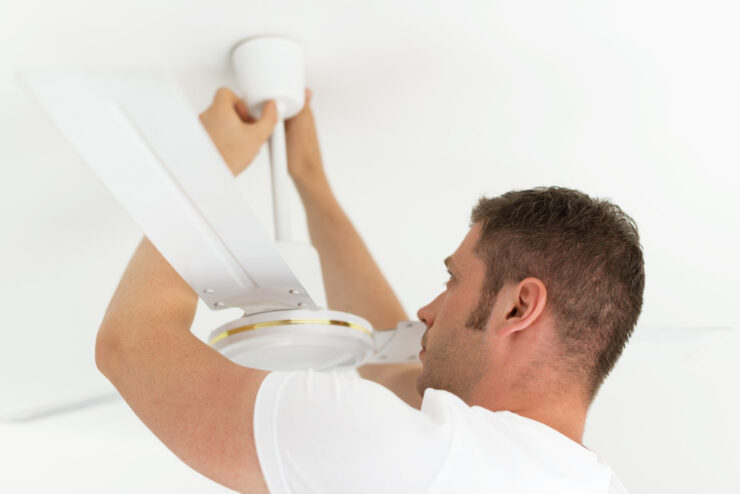A ceiling fan is great for circulating air in a room. This can cool you off during the summer or push warm air down from the ceiling during the winter. According to the U.S. Department of Energy, ceiling fans allow you to set your thermostat four degrees cooler with no reduction in comfort in the room. Besides comfort, this can add up to significant savings on your utility bill.
Like all machines, fans can break down. But before you panic and go out to buy a new ceiling fan, some problems are easy to fix. Here are three common ones, information on how to identify them, and some advice on how to go about addressing these issues.
Note that, before you work on any electrical components of a fan, be sure to turn off the power to the device.
1. A Ceiling Fan That Doesn’t Power On
If your ceiling fan is not working at all, the first thing to do is ensure it is receiving power. Check the breaker box to see if a circuit has tripped. If there are no problems here, you can also use a voltage tester to see if there may be issues with the light switch.
If loose wiring connections are the culprit, you will want to replace these immediately. Not only do you want to get your fan working, but these are a fire hazard as well.
2. A Fan That Is Making Noise
Ceiling fan motors do not last forever. If your fan is running but is making a humming sound, it could be a sign that the motor is going out.
However, another cause of this is the use of dimmer controls. These are not intended to work with fans and should be replaced.
If your fan is making a clanking noise, it could be a result of ball bearings. Like in other motors, these often need to be cleaned and lubricated. You might consider hiring a repair person or consult more detailed DIY tutorials for how to make it stop.
3. A Fan That is Wobbling
One common problem with ceiling fans is wobbling. Besides being a nuisance, this can be quite dangerous.
The first thing you will want to check in this instance is if the ceiling fan shackle is tight. This is merely a matter of tightening the screws the secure it.
If this does not fix the issue, then remove the shackle and see if the fan is hanging from an electrical box designed for fans. Disconnect the housing of the fan and look for labels on the box that state if it is fan-rated. If it is not, you will need to replace it.
Finally, see if all the bolts securing the fan to the wood base are secure. If so, check if the fan blades are level relative to one another. If they are not, then you will need to replace the uneven one(s).
Fix Your Ceiling Fan Today
Now that you have an idea of some common ceiling fan issues and how to fix them, you can get yours back up and running. These basic checks and repairs can keep you from having to buy a ceiling fan. You can keep your home cool while saving on electricity costs.
We hope this information on ceiling fan troubleshooting was helpful to you. If so, be sure to check out some of our other home improvement posts, as well as those on technology, health, marketing, and many other topics.




























